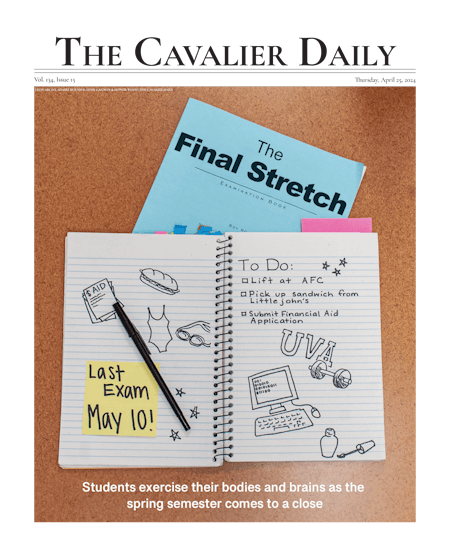Forgive me; I am about to express an unpopular opinion. Rather than liberally handing out credit to incoming first-years, there should be a ban on substituting high school credit for required classes in the college. Most students at the University come in with credits upon credits in a vast variety of fields. Having a large number of credits is a result of the goal of high school — to introduce as many fields of learning as possible to the student. There is a problem with skipping out on requirements with high school credits; they don’t often match up in both quality of teaching and difficulty of testing.
I, unlike many students, came in with a minimal amount of credit: less than five credit hours. I know of students who came in with upwards of 40, which basically meant they could go straight into fulfilling major requirements. Rather than promoting the idea of a liberal arts curriculum students are bypassing that which makes paying for college worth it.
The main intent of requirements in the College is twofold. The first is to promote the development of new interests in other fields that could be unrelated to that which the student is already intent on taking. Students who come in with enough credit to take only major requirements often are the same ones who have already determined what path they wish to pursue. Rather than being forced to have contact with the college level experience of these fields they are allowed to keep the blinders on by only focusing on one thing. They are allowing themselves to be herded along the path by the fact that they don’t have to explore. The beauty of prerequisites is that they are limited enough so that they neither detract from the major requirements or graduating on time. It is possible to excel in courses relevant to one’s major and to fulfill prerequisites at the same time.
The second reason for requirements in the College is to promote the ideal of a well-rounded student. The beauty of requirements is that they allow students to gain knowledge in a wide variety of areas that could relate to their major in ways that were probably not addressed well, if at all, in high school. Such a blend creates value through the synergistic synthesis of ideas and concepts across subjects. A history student may find he is interested in astronomy after fulfilling a prerequisite and could apply principles from each to the other to innovate in both fields. The goal is not to change the entire orientation of the student’s path but to increase the number of facets of their intellectual scope, resulting in an increased number of paths to solve any given problem.
High school does not focus on the application and critical thinking about ideas that are learned in the classroom. Rather than thinking critically about concepts that are learned, they are simply learned. Receiving credit for such courses defeats the purpose of an area requirement because the critical thinking that involves application above and beyond the field at hand is not there. College courses involve a level of rigor that is unmatched in high school, as it should be because it is a service we pay for. We need to stop giving equivalence to college and high school classes.
It is also unfair to students who did not go to high schools that offered a large number of courses that counted for college credit. I went to a disadvantaged high school in terms of funding and median family income of students. My high school offered only two Advanced Placement courses. This system starts students from small or impoverished high schools a step down the ladder. Furthermore, students could still take heavy course loads in high school to take the same courses here, which would make them easy to get a good grade in. This retains the incentive for large course loads while also reducing the stress of getting credit in high school.
The University is already in conflict with itself because of the strained relations between haves and have-nots, as well as how that affects minority life. The credit gap between rich and poor students is large in part because 50 percent of dual enrollment or Advanced Placement credit testing is paid for by the individual student. Furthermore, this statistic is skewed toward richer school districts paying for their students and poorer ones not having the resources to do so.
Credit is great for those lucky enough to have it because it allows students to be very creative with their scheduling and can be used as a crutch to hide deficiencies in other areas. However, in very extreme circumstances, this restriction could be waived for financial difficulty or other legitimate issues that necessitate a reduced number of semesters.
Rather than allowing the current system to continue where prerequisites are treated as hassles and are simply leapfrogged in some cases, we need to reform a system to promote the ideals of a liberal arts education. Making students actually take requirements will produce a more involved and intellectual student population.
Sawan Patel is an Opinion columnist for The Cavalier Daily. He can be reached at s.patel@cavalierdaily.com.




